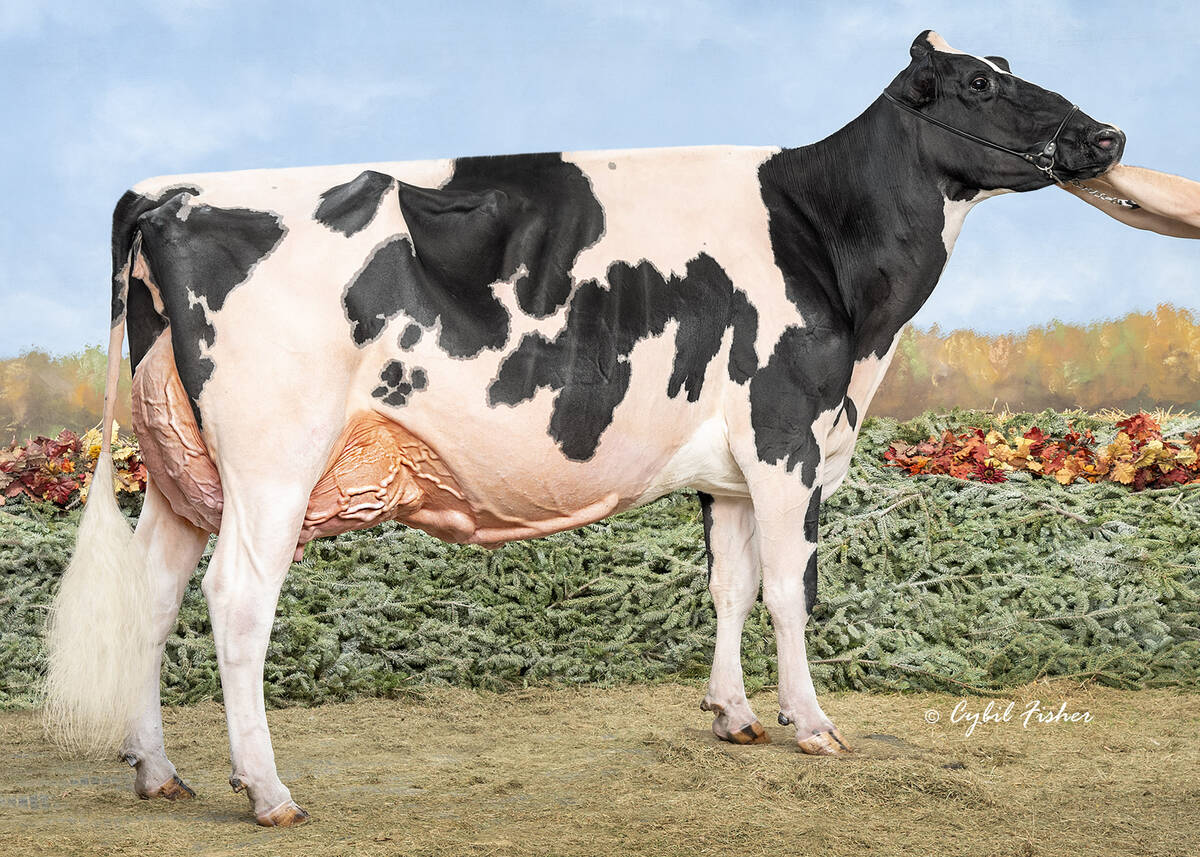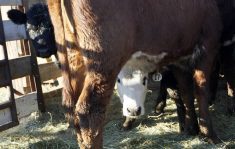INNISFAIL, Alta. Ñ An Alberta rancher who thought he did everything right has Canada’s latest BSE cow.
Charolais breeders Wilhelm and Cheri Vohs were told Jan. 7 that a cow born on their Innisfail area farm in 1998 had the fatal brain wasting disease.
“That’s the most intense news I ever got,” he told a news conference in Innisfail Jan. 13.
Between Christmas and New Year’s, the cow had stumbled, hurt its leg and could not get up. Their veterinarian recommended euthanasia and a brain sample was submitted for BSE testing because the cow fit into the “four D” category of down, diseased, dying or dead.
Read Also

Saskatchewan dairy farm breeds international champion
A Saskatchewan bred cow made history at the 2025 World Dairy Expo in Madison, Wisconsin, when she was named grand champion in the five-year-old Holstein class.
The event has landed an ordinary couple into extraordinary circumstances of intense media scrutiny and international attention.
As Canada’s third domestic case, it has garnered special attention.
The cow was one of 104 calves born on the farm six months after the Canadian government prohibited the use of any ruminant meat and bone meal in cattle feed.
Vohs said he bought some calf starter from a local feed mill in the spring of 1998. He has always grown his own feed but decided to try creep feeding to get extra growth and performance in his 104 calves that one year. He was aware of the feed ban and trusted the supplements were safe.
“I don’t think I did anything wrong,” he said.
As a member of the Canadian Charolais Association, Vohs participated in the registry’s whole herd enrolment program created in 1998.
Every year he enrolled his entire herd of about 100 purebred cows. Pedigree registrations, cattle performance, calf records and other herd identification were entered.
His attention to detail has made for a smooth investigation, said Canadian Food Inspection Agency vet George Luterbach.
“The farm records are excellent and their co-operation is excellent,” he said.
Now the agency is looking at his farm management and the whereabouts of animals born in 1997, 1998 and 1999. Of the 104 calves born in 1998, 70 were shipped as feeders to local feedlots and the other 34 were sold as breeding bulls to neighbours or used as replacement females in the Vohs herd. They did not export any animals, semen or embryos.
Of particular interest is the feed supply. It is possible some material was left over after the ban was implemented, because no recalls went out to destroy feed containing meat and bone meal, said Luterbach.
Part of the problem is the time frame. Canada had no BSE- positive animals in 1997 and so the risk of contamination was considered almost non-existent.
“The changes were put in place as a precaution and unbeknownst to us there was contamination in the feed,” said Luterbach.
It is believed a few cattle imported from Great Britain from1980-90 may have been infected and ended up in the rendering system and subsequently went into cattle feed as protein supplements.
The situation has placed Vohs in an uncertain position as he wonders who will buy his bulls now. So far, customers and neighbours have been supportive as he works through the situation.
Neighbour Allan Marshall, who is also past-president of the Charolais association, praised Vohs and the way he ran his farm. Vohs emigrated from Germany in 1979 and started his purebred herd of Canadian-born Charolais in 1985.
“He was a great producer and all the cows were registered and can be tracked,” said Marshall.
“Wilhelm had immaculate records and he could tell where every one of his bulls went. That was his business and he knew what he was doing,” he said.
The association will lend moral support and the Canadian government will compensate Vohs for animals ordered destroyed. The infected cow’s carcass is to be incinerated. The other suspect animals will be valued and Vohs is eligible for payments of up to $2,500 per head.
Association manager Neil Gillies said Vohs was a model member.
“He was one of those members who did everything by the book,” said Gillies.
The association was not contacted to participate in the investigation, but it is able to verify all of Vohs’s records going back to when he entered the industry.
“If there is any good news out of this whole thing, it is that this man’s records will be very good,” said Gillies.















